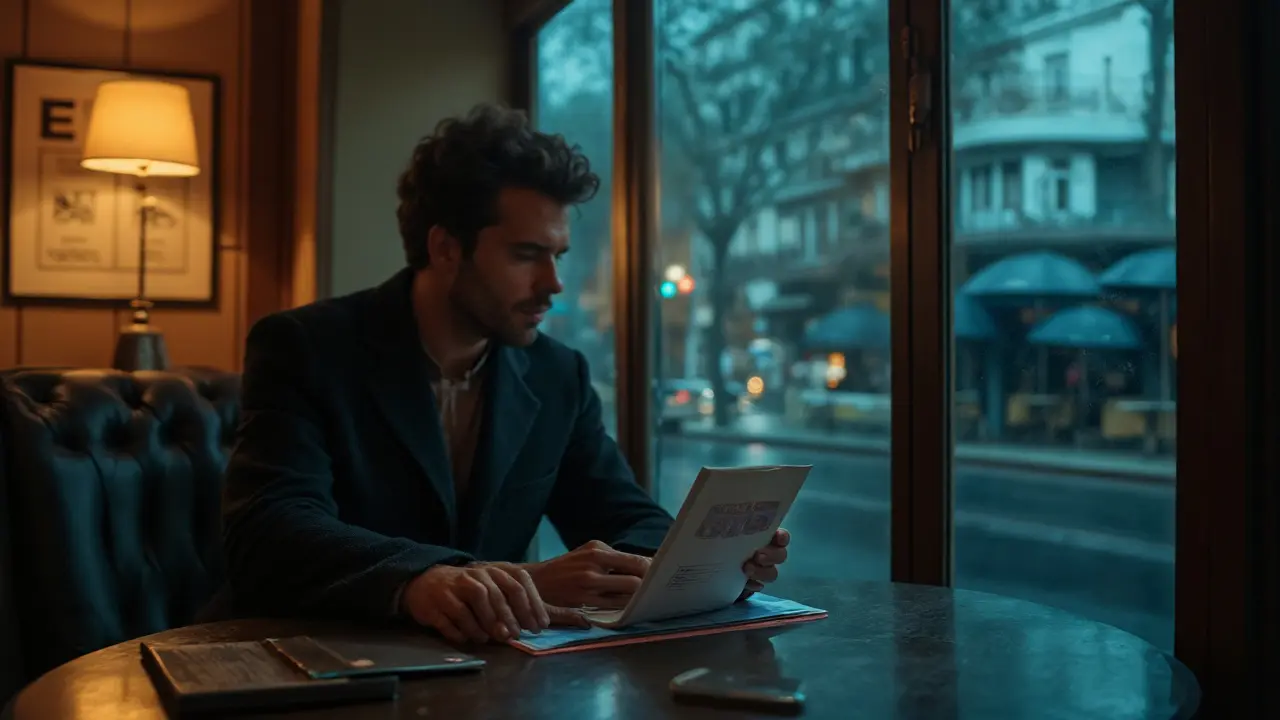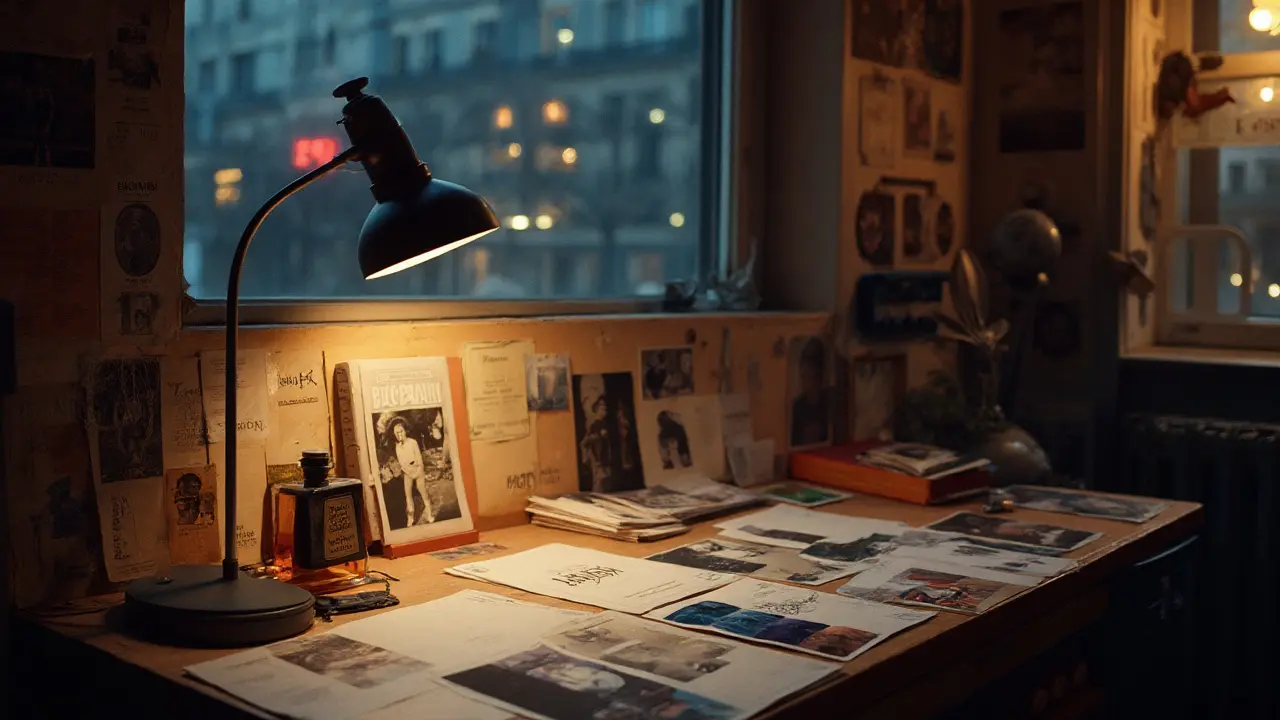TL;DR
- French cinema built enduring archetypes (Belle de Jour elegance, Belle Époque opulence, discreet hotel rendezvous) that still guide branding, styling, and client expectations in the Paris escort industry.
- Agencies and independents borrow cinematic language-lighting, wardrobe, black‑and‑white imagery-to signal discretion and luxury, but need clear ethics lines to avoid glamorizing harm.
- Streaming has globalized French film tropes, so international clients arrive with screen-shaped fantasies; managing expectations is now part of the job.
- France’s 2016 law penalizes buyers of sexual services; messaging and safety protocols must reflect contemporary legal realities.
- Use film as a moodboard, not a manual: keep consent, adult verification, privacy, and safety at the center.
What French films actually shaped the myth-and what that changes on the ground
You can trace a lot of Paris’s adult-world aesthetics back to a handful of films. The image most people think of first-an immaculate woman in a trench coat and heels slipping into a plush hotel-belongs to Luis Buñuel’s Belle de Jour (1967). That cool, controlled elegance still shows up in site photography, wardrobe choices, and the way upscale companions describe discretion. It’s shorthand: Paris, but private.
Then there’s Bertrand Bonello’s L’Apollonide (House of Tolerance, 2011), all velvet rooms and amber light. It didn’t invent Belle Époque opulence, but it fixed a visual grammar-satin, corsetry, candlelight-that pops up on landing pages and in photo sets whenever someone wants to signal “heritage luxury.” Anne Fontaine’s Nathalie... (2003) added another angle: the discreet, emotionally complex paid encounter, filtered through a female director’s lens. Josiane Balasko’s Cliente (2008) took that further, flipping the gaze to a woman hiring a male escort, which made “escort” feel like a mainstream word in French living rooms.
Across decades, the big themes repeat: discretion over spectacle, couture over cliché, and a tendency to put the rendezvous in five-star hotel bars instead of flashier nightlife. When you map those tropes onto real operations in Paris, you see three practical effects:
- Branding cues: black‑and‑white portraits, serif typography, minimalist color palettes, and designer lingerie (Aubade, Chantelle) cue “French cinema” without saying a word.
- Service framing: biographies and ads highlight conversation, art-house taste, and cultural outings as much as intimacy-because that is the story films taught clients to want.
- Pricing power: cinematic luxury aesthetics anchor higher price expectations. The visual language primes people to place the service next to other premium Paris experiences.
One more modern twist: streaming. International viewers discover French films on platforms and fly into Paris with screen-ready fantasies. That’s not a problem by itself; it just means pros now spend more time resetting expectations from “movie montage” to real life, where boundaries, schedules, and the law actually matter.
How to use cinema as a brand engine (without crossing ethical or legal lines)
If you’re a creative director, independent companion, or agency operator, film can be a powerful moodboard. Here’s a clear, safe way to use it.
- Audit your current story. Pull your homepage, bio, and top nine photos. What do they say about discretion, culture, and luxury? Circle any clichés (red light filters, cliché Eiffel shots) that feel closer to pulp than to cinema.
- Pick two reference worlds, max. “Belle de Jour cool” and “Belle Époque glow” can coexist. Five references cannot. Fewer references keep your visual language tight and believable.
- Build a moodboard. Grab stills for lighting, framing, and wardrobe: trench coat with clean lines; soft focus near window light; monochrome portraits; a velvet chair in warm light. Note: you’re borrowing mood, not plot.
- Translate into assets. Practical swaps that work: sans serif to refined serif; harsh flash to window light; bodycon clubwear to tailored dresses; copy that promises conversation, confidentiality, and cultural savvy over vague superlatives.
- Make boundaries explicit. Put safety and consent cues in plain sight: age verification, clear booking policies, limits, ID checks for collaborators like photographers. A small “privacy-first” note stabilizes expectations.
- Localize discreetly. Reference Paris without overdoing it: a hotel lobby detail, a Left Bank bookstore, a classic taxi silhouette. Avoid tourist-trap vibes. Think restrained, not postcard.
- Measure what matters. Track quality signals, not just clicks: inquiry quality, no‑show rate, back‑and‑forth needed to align expectations, and whether clients reference your cultural framing (“loved the art-house recs”).
Heuristics that save time:
- If a shot could sit in a Cannes press kit, you’re close. If it looks like a nightclub promo, you’re off.
- Black‑and‑white hides noise and signals thoughtfulness. Color needs purpose: deep navy, champagne, oxblood. Skip neon.
- One prop per frame. A trench, a book, one cocktail. Clutter kills the mood.
- Write like a film synopsis: who (persona), where (ambiance), why (chemistry). Keep verbs active, sentences short.
Copy checklist for a discreet, cinema‑literate page:
- One sentence on discretion and privacy.
- One line on cultural affinities (cinema, galleries, live jazz).
- Two lines on boundaries (what you do and don’t do; respect for time and safety).
- Tone: warm, composed, unfussy. No winking or coded language.
And a legal sanity pass, because France in 2025 is not the 1960s on screen. Since 2016 (Loi n° 2016‑444), purchasing sexual services is penalized. Agencies and independents should avoid any copy that could be read as incitement or solicitation in public spaces, and handle screening and meetings with strong privacy and safety practices. This isn’t legal advice; if in doubt, speak to a lawyer familiar with French law and municipal ordinances in Paris.

Where cinema misleads: expectations, ethics, and safety
Films compress life into beautiful moments. Real people need guardrails. Here are the gaps that matter.
- Discretion vs. secrecy. Movies turn secrecy into romance. In practice, secrecy without rules increases risk. Use verified screening (within privacy limits), meet in public venues first, and let a trusted contact know your itinerary. Discretion isn’t the absence of process-it’s private process.
- Glamor vs. labor. On screen, the dress fits itself and nobody is tired. In real life, time, travel, emotional labor, and admin are part of the work. Pricing, scheduling buffers, and firm cancellation policies protect the human behind the image.
- Age and power dynamics. Some classic films lean on ingénue tropes. Avoid visuals that read as underage. Stick to adult, professional styling and language; be explicit about age verification in collaborations.
- Hotel mythology. Cinematic hotel scenes make five-star lobbies feel like neutral ground. They’re not always the safest or most convenient. Consider vetted lounges, known restaurants, time windows, and exit routes.
- Intimacy narrative. Films imply chemistry appears on cue. In reality, consent is ongoing, and boundaries can change. Clear pre-meeting communication reduces mismatched expectations.
What about the social climate? France’s 2016 client‑penalization law reshaped behavior. Organizations like Médecins du Monde and community groups have documented increased precarity for some workers post‑2016, while supporters argue it reduces demand and trafficking. Regardless of where you stand, three operational takeaways hold:
- Keep communications private and professional; avoid public solicitation language.
- Educate international clients briefly about boundaries and legal context so they don’t walk in with a “movie logic” approach.
- Invest in safety planning: check‑ins, secure payments, transport plans, and a shortlist of lawyers or rights groups you can consult if needed.
| Year | France cinema admissions (millions) | Context for culture influence | Source |
|---|---|---|---|
| 2019 | ~213 | Pre‑pandemic peak; strong theatrical habit feeds shared film references | CNC annual admissions reports |
| 2020 | ~65 | Pandemic drop; streaming accelerates international exposure to French films | CNC |
| 2021 | ~96 | Gradual recovery; hybrid viewing sticks | CNC |
| 2022 | ~152 | Return to cinemas brings classic re‑releases and auteur runs | CNC |
| 2023 | ~181 | Theaters regain momentum; film talk is socially “current” again in Paris | CNC |
Why include admissions? Because when more people watch and talk about films, their aesthetics and attitudes flow into fashion, photography, and the way clients describe what they want. That shows up in inquiries: references to “Belle de Jour vibes,” “art‑house dinner,” “Left Bank cinema,” or simply “tasteful and discreet.”
Examples, tools, and your go‑forward plan
Concrete examples from the last decade of client chatter and branding trends in Paris:
- Visuals: Agencies swapping glossy club backdrops for hotel armchairs, window light, and trench coats; indie companions using black‑and‑white portraits with crisp lines and a single prop (a book, a coupe glass).
- Copy: Bios mentioning Lumière, Godard, or contemporary directors to telegraph taste; short lines about conversation, gallery vernissages, or Cinémathèque screenings.
- Wardrobe: Shift from sequin minis to tailored daywear, silk blouses, or little black dresses; luxury lingerie brands featured subtly (labels not shown, silhouettes speak).
- Itinerary framing: Dinner-and-conversation first; public venue rendezvous; walkable neighborhoods as a character (Saint‑Germain, Palais‑Royal arcades) rather than cliché landmarks.
Quick decision tree for a photo set:
- Do you want cool elegance or warm nostalgia? Cool: monochrome, sharp tailoring, reflective surfaces. Warm: gold light, velvet textures, softer focus.
- Indoor or outdoor? Indoor: window light, mid‑century chairs, hotel corridor symmetry. Outdoor: cobblestones after rain, café terraces at blue hour, bookstore aisles.
- One signature cue? Choose a trench, a silk scarf, or a vintage cinema ticket stub-don’t stack them.
Ethical reference checklist (use before you publish):
- All collaborators are adults with documented consent for images.
- No school‑coded or youthful styling; avoid uniforms that could be misread.
- Copy avoids glamorizing coercion or addiction storylines from films.
- Safety statement present: privacy, screening, time boundaries.
- Location images don’t reveal private addresses or staff faces.
Mini‑FAQ
Is escorting legal in France in 2025?
Selling sexual services by adults is not itself a criminal offense, but purchasing them is penalized under the 2016 law. Related activities (brothel‑keeping, pimping, trafficking) remain criminalized. This is general information-get legal counsel for specifics.
Which films do clients mention most?
Belle de Jour for cool elegance; L’Apollonide for Belle Époque ambiance; Nathalie... and Cliente for discreet, emotionally literate encounters. Newer streams of influence come from contemporary festival films and series that lean on minimalist Paris luxury.
Can agencies use film titles in marketing?
Avoid using protected titles or stills without rights. Reference aesthetics and themes instead of direct names. Describe the mood (“Buñuel‑like restraint,” “Belle Époque glow”) rather than quoting titles.
Does Cannes season change anything?
Indirectly. Media coverage spikes film talk and luxury cues across fashion and hospitality. That can lift interest in cinematic aesthetics, but it doesn’t change legal or safety realities in Paris.
How do you push back on screen‑driven fantasies politely?
Use plain language: “I love classic French cinema too. Real life works on mutual comfort and timing. Here’s what I do, here’s what I don’t, and here’s how we keep it comfortable for both of us.”
Next steps
- Independent companion: Choose one cinematic reference, refresh your top five images with that mood, add a 2‑line privacy and boundaries note, and track the quality of inquiries for 30 days.
- Agency operator: Standardize a brand kit (type, color, light) for all profiles; run a short briefing to align ethics; audit copy for legal safety; build a simple inquiry triage script that screens for screen‑fantasy mismatches.
- Researcher or journalist: Interview three workers on whether clients reference films or series; triangulate with CNC admissions data and fashion trend reports; avoid pathologizing-look for concrete behavior changes.
Pitfalls to avoid
- Using film tropes that center coercion or youth.
- Over‑styling: when the set design shouts, humans recede.
- Ambiguous language that could be read as public solicitation.
- Borrowed photos, unlicensed stills, or music in reels.
Credibility notes
- Loi n° 2016‑444 (13 April 2016) instituted client penalization in France; several evaluations since then (including by Médecins du Monde and French government bodies) debate outcomes on safety and demand.
- Centre national du cinéma (CNC) admissions trends from 2019-2023 show the ebb of the pandemic and a recovery that keeps film talk culturally current-relevant because aesthetic trends follow attention.
Films give Paris a mood. Use that mood with care: refined visuals, adult professionalism, clear boundaries. The work is human. The cinema is just the lighting.

